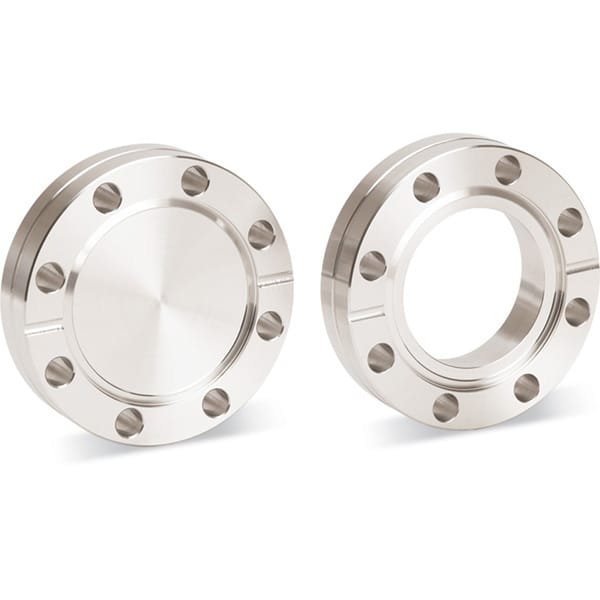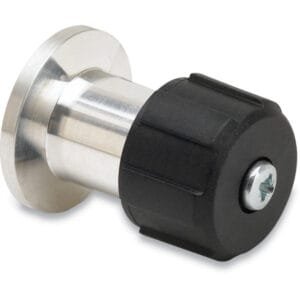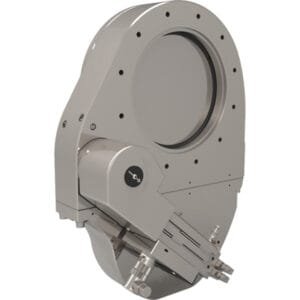ConFlat (CF) Flanges: Essential for High Vacuum and UHV Systems
ConFlat (CF) flanges are a leading choice for high vacuum (HV) and ultra-high vacuum (UHV) applications. Widely recognized for their reliability, these flanges are compatible with a range of components such as gauges, feedthroughs, instruments, and accessories, making them versatile for vacuum systems.
Blank (Blind) Flanges
A blank, or blind flange, is a solid disc-shaped fitting designed to close off unused ports or sections in vacuum chambers. These flanges can be customized through machining to fit specific configurations or provide a secure seal over unused areas in vacuum systems.
CF Flange Sealing Mechanism
The sealing process of CF flanges is based on a knife-edge design machined just below the surface of the flange. When two flanges are bolted together, the knife-edges press into a soft metal gasket, forming grooves that fill any surface irregularities. This method ensures a reliable, leak-tight seal. CF seals can operate from pressures as high as 760 torr (103 mbar) to ultra-high vacuum levels below 1 x 10⁻¹³ torr (<1.3 x 10⁻¹³ mbar) and can function within a temperature range of -196°C to 450°C, depending on the material used.
Flange Size Nomenclature
In North America, the sizes of CF flanges are typically based on the outside diameter (O.D.). However, in Europe and parts of Asia, the internal diameter (I.D.), which refers to the largest tube that can be welded to a bored flange, is often used for size reference.
Versions of ConFlat Flanges
ConFlat flanges are available in two main designs:
- Fixed Flanges: These flanges feature a one-piece design where the bolt-hole orientation is fixed relative to the fitting. Fixed blank flanges are often used to seal off unused ports, while fixed bored flanges can be welded to standard tube sizes.
- Rotatable Flanges: Comprising two parts—an inner weld ring and an outer bolt ring—rotatable flanges allow the bolt ring to rotate around the inner weld ring, making it easier to align bolt holes with mating flanges. Rotatable bored flanges are designed to accommodate standard tube sizes and can also be welded onto various components.
Both versions, fixed and rotatable, are available with two hole options: clearance-holes or tapped holes.
Hole Options
- Clearance-Holes: These through-holes allow bolts to pass through the flange, secured on the other side by nuts or plate nuts.
- Tapped Holes: These imperial or metric threaded holes eliminate the need for nuts or plate nuts, as the bolts are directly threaded into the flange. It’s important to consider the bolt-hole orientation when selecting tapped flanges for proper alignment.
316LN Stainless Steel: Enhanced Durability
ConFlat flanges made from 316LN stainless steel offer distinct advantages for demanding applications:
- Increased Hardness: With a hardness of 170 on the Brinell scale, 316LN stainless steel is more durable than 304L, making it ideal for vacuum systems where frequent dismantling and reassembly are required.
- Electro-Slag Remelting (ESR): This process enhances the homogeneity of the material, reducing segregation and improving overall structural integrity.
- Low Magnetic Permeability: With a magnetic permeability of µ ≤ 1.005 (compared to 1.03 for 304L stainless steel), 316LN is suitable for applications sensitive to magnetic interference.
This combination of features makes CF flanges, particularly those made from 316LN stainless steel, a crucial component for reliable and efficient high vacuum and UHV systems.





Reviews
There are no reviews yet.